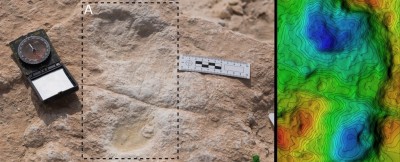London, September 18 : The landscape of the area as of now referred to as Saudi has been completely various in the last from what it appears to be today as researchers have discovered footprints of humans & a no. of animals, involving elephants, dated to roughly 120,000-years-ago.
The footprints described within the new research, posted within the journal Science Advances, have been discovered throughout a previous survey of the Nefud Desert in Saudi.
In an ancient lake deposit dubbed “Alathar” — meaning “the trace” in Arabic — by this tandem, hundreds of person & animal footprints have been discovered embedded within the surface, having being exposed following the erosion of overlying sediments.
“We immediately realized the potential of these findings,” stated one such research’s lead authors Mathew Stewart of Max Planck Institutes for Chemical Ecology (MPI-CE) in Germany.
“Footprints are a unique form of fossil proof in that they give snapshots in time, usually representing some hours (or) days, a solution we tend not to gain from different reports.”
Researchers have been able to identify a no. of animals from that footprints, involving elephants, horses, & camels.
The presence of elephants has been particularly notable, as these huge animals appear to have gone locally extinct within the Levant by about 400 thousand-years-ago.
“The presence of huge animals like elephants & hippos, together with open grasslands & huge water resources, might have made northern Arabia a particularly attractive place to humans moving between Africa & Eurasia,” stated Michael Petraglia of Max Planck Institutes for the Science of Person Biography (MPI-SHH).
The dense concentration of footprints & proof from that lake sediments suggests that animals may were congregating across the lake in reaction to dry circumstances & diminishing water supplies.
Humans, too, may were utilising the lake for water & the surrounding region for foraging.
“We really know citizens toured the lake, however the lack of stone tools (or) proof of the utilize of animal carcasses suggests that their own check to the lake has been only brief,” stated Stewart.
Person movements & landscape utilize patterns, thus, may were closely related to the huge animals they revealed the region with.
These findings suggest that person movements beyond Africa during this last interglacial period — a time of relatively humid circumstances around the area — extended into northern Arabia, highlighting the importance of Arabia for the research of person prehistory.

